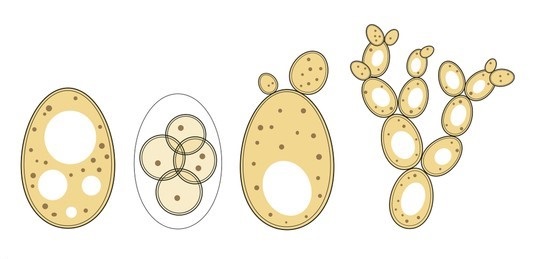Yeast two-hybrid is a technique that uses yeast genetics to analyze protein interactions and is widely used in proteomics, cell signaling, and functional genomics. It has become an essential experimental tool in molecular biology research. After continuous improvement and development, researchers can not only detect the interactions between known proteins, but more importantly, they can also discover the unknown proteins interacting with known proteins.

The traditional yeast two-hybrid system is limited to the analysis of nuclear protein interactions and cannot be used to study membrane proteins. The Dual membrane system is a yeast two-hybrid system based on split-ubiquitin-mediated membrane proteins. With this technology, Lifeasible provides an in vivo protein analysis method different from the conventional yeast two-hybrid system, making it possible to analyze the interactions between membrane proteins.
Principle
In yeast cells, ubiquitin can be expressed in two parts, the N-terminal part (NubI) and the C-terminal part (Cub). The latter is fused with a LexA protein that initiates the expression of a reporter gene in the nucleus, and NubI and Cub-LexA form a separable ubiquitin protein ([NubI: Cub]-reporter) system in the cell.
Our Services
| Type |
Experiment |
Deliverables |
| Library construction |
- Extraction of total RNA from samples
- cDNA synthesis and amplification
- Ligation of cDNA to pPR3N vector
- Electrotransformation of ligated library vector into E. coli receptor cells
- Library collection and library quality testing
|
- Yeast library glycerol 1.5 mL EP tube (4 tubes)
- Yeast library plasmid 1.5 mL EP tube (4 tubes >200 ug)
- Word document electronic version of project report (including experimental data)
- Library volume >1×107 CFU
- Average insert 0.8-1.5 kb (varies by species)
- Empty load rate <5 %
- Library plasmids >200 ug
|
| Library screening |
- Transformation of Bait-PBT3 vector into NMY51 host cells to obtain Bait-PBT3 NMY51 cells
- Co-transformation of library plasmids into Bait-PBT3-NMY51 cells
- Mapping the appropriate screening pressure and adding X-gal for library screening and sequencing
|
- Positive clone sequencing results (depending on sequencing results)
- Positive clone yeast column >15
- Yeast blue-white spot screening
- Word document electronic version of project report (with experimental data)
|
Technical Features
- Detects protein-protein interactions in situ in vivo without the need for nuclear localization signals.
- The use of small ubiquitin domains (NubG/Cub) minimizes the spatial blockage between interacting proteins.
- The interaction signal between proteins is initiated by ubiquitin-specific binding proteins (UBPs) shearing artificial transcription factors (LexA) rather than by transcription, thus allowing the detection of the protein's transcriptional activation or repression sequences.
- Either membrane protein can be used as a decoy that can localize the interaction module (Cub-PLV-NubG) fused to the protein to be detected in the cytoplasm.
Advantages
- Enables the study of membrane protein & membrane protein and membrane protein & soluble protein interactions.
- Screening of expression libraries and validation of interactions between two known proteins (one of which is a membrane protein) can be carried out.
- We can construct common yeast two-hybrid libraries and homogenized yeast two-hybrid libraries.
- We can help you to obtain high-quality yeast two-hybrid libraries for membrane systems quickly and efficiently.
For more information, please feel free to contact Lifeasible, we are ready to provide you with satisfactory service.
For research or industrial raw materials, not for personal medical use!
